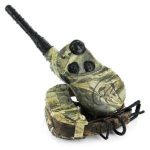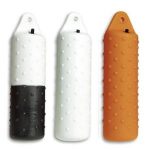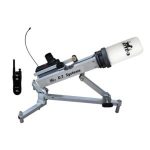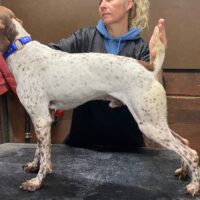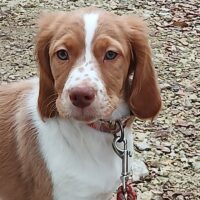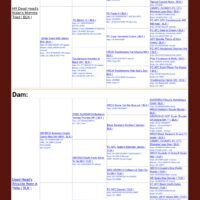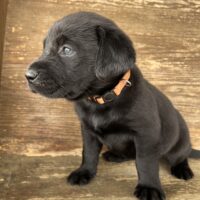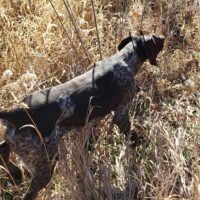Training Labs to Hunt
Labrador retrievers are medium large dogs that are the primary retrieving breed for waterfowl and upland hunters. They normally come in four different colors; black, yellow, silver or chocolate. This breed is a great all-round dog. They are even tempered, obedient, learn well and love to hunt. For many years they were used exclusively as either retrieving or flushing dogs. Today, many are also being trained to point wild game as well. They are very easily trained and have a keen desire to please. Labs are also frequently used as therapy dogs for the same reasons. Training Labs to hunt is both fun and rewarding.
Here are some dog hunting supplies that you can buy on Buy and Sell Hunting Dogs that will aid in training retrievers.
- SportDOG Wetland Hunter 1825
- Training Dummies
- Dummy Launcher
- 30 Foot Check Cord
Training Techniques for Labs
Positive/Negative Reinforcement Training
Dogs are a lot like people. They respond to positive affirmation by doing their best to get the same “atta” boy for doing well. Below is a list of training techniques, so you can see what works and what might not with your individual dog. We have seen some of the premiere Lab trainers post Lab puppies for sale on Buy and Sell Hunting Dogs. These dogs are bred to hunt, and pups like this will already have it in their genes when emerging from the womb. However, dogs are like people. “Hard work beats talent, when talent doesn’t work hard.”
- Positive reinforcement – Increases behavior by adding something the dog sees as pleasant. Example: Giving high praise or a treat if your Labrador sits when asked.
- Positive punishment – Decreases behavior by adding something the dog sees as unpleasant. Example: Your dog jumps up and you turn away and ignore him.
- Negative reinforcement – Increases behavior by taking something away that’s unpleasant. Example: Pulling up on your dog’s collar until he sits. When he sits, you release the collar. So an unpleasant thing is removed when the behavior is performed.
- Negative punishment – Decreases behavior by taking something away that’s desirable. Example: You want to play fetch, but your Labrador repeatedly jumps up and tries to snatch the toy. You can hold the toy in such a way that he knows he will not get it until he stops and relaxes. He will learn you will only play fetch when he is calm and patiently waiting, thereby reducing jumping and snatching.
Waterfowl Training for Labs
We are just sticking to the basics in this article. Whole books have been used to write about this topic. Use this overview as a guide to get you started. Your training to train the dog will come come in short bursts, rather than long marathons. This same approach should be used in your training your dog as well.
Training your dog to hunt never starts on the first day of hunting season as some novice hunters may think. It starts by conditioning little Buck (for discussion sake) to fetch things around the house and then progresses to such steps as:
- Fetching a training dummy – Condition him to the word FETCH
- Conditioning him to loud noises slowly over time
- Fetching a training dummy with wings attached (use a variety; ducks, pheasant, chukar, grouse)
- If possible, let your dog watch another dog performing these tasks to help him see the goal
- Fetching a training dummy in the water with a blank gun
- Fetching downed birds
Once you have him trained to live for the fetch, you can start getting him to learn patience. Patience doesn’t start in the blind; it starts at home. Having him learn the commands Sit/ Stay is paramount to learning patience. You can do this at home by having Buck learn to sit/stay next to you while you are watching TV etc. Do this in short increments followed by positive reinforcement. Gradually do this in all different situations to accustom him to what you want of him. When you are playing fetch, slowly work this into the routine. DON’T OVER DO IT! Often, less is best when it comes to dog training. It’s better to do it 5 minutes per day for 1 week than 35 minutes one day per week. Make Buck want to come back for more. This method will work well in all methods of training.
Take him to where you want to go waterfowl hunting and practice having him sitting in the blind. Have Buck do a few blinds each time you go. Make it fun. Make sure he has to Stay until you tell him to retrieve. Praise the heck out of him! Make this one of things he LIVES for. Slowly work a blank gun into the blind work. Condition him to think that the noise, the water, the blind and the retrieve are all a game. Make it easy for him to win the game at first. Build his confidence. DON”T OVER DO IT! Have fun.
Teaching Your Lab to Hunt Pheasants (Flush)
This article uses pheasants for the sake of discussion, but the basics of this article are relevant to all forms of upland bird hunting with Labrador Retrievers. Training Labs to hunt pheasants will be an added bonus and may even be something you enjoy more than sitting in the blind waiting for ducks. Labs are naturally curious animals, and when they learn what it is you want them to pursue by smell, they are all in! If you took the proper steps to introduce your dog to fetching dummies with wings, he will already be conditioned to the smell of birds. Using different kinds of wings (pheasant, grouse, duck) will help associate him to a variety of bird scents that will come in handy as his training progresses.
Start by going for walks with him in a park where he can see you. Occasionally hide behind a tree and make him search for you. He will learn to use both his eyes and his nose. Teaching him to keep track of you now will pay dividends when the cover is thick and he can’t see you. Gradually, start taking him to places where it is bushy. A mowed hay field with a wild edge to it is always a plus. Have him follow you in all of these places. Let him wander and explore. As he becomes confident that he won’t lose you or that you won’t run off, encourage him to go into thicker brush. This will come in handy later for all types of upland hunting.
After he has gotten used to exploring the unknown brush, try and find some birds such as pigeons or pheasants that you can plant to help him along. Make sure when you plant the bird you get it to flap its wings in and around the plant spot to give off added scent. Dizzy the bird slightly before you plant him, so he won’t run off too far. Let the birds you plant sit there for at least 10 minutes so they give out more scent. Pigeons and chukars work well for this because you can buy them cheaper than many other birds, and they give off an adequate amount of scent. Try and get birds that are raised in flight pens so they fly better.
At first, make it easy for him to find the birds, and then gradually make the game more exciting and challenging by planting the birds in thicker cover. Gradually work the gun into the situation. Make sure he is already conditioned to gun shots. Use a light gun; no room for a 12 guage that sounds like a cannon at this stage of the game. Try and hit the first bird you shoot at on gun day. Encourage him to find the bird when you hit it….make sure you say FETCH. When he finds it, he will not know exactly what to do with it at first, but saying FETCH will help him realize your goal. He may not bring it all the way back at first, but given practice and patience he will slowly understand.
Once he has gotten the basics down, take him hunting as much as possible. The more he experiences different situations, the better he will become. Don’t be angry if a bird goes down and starts running, thus making it harder for him to find. Make this a game that he wants to win. Will he lose birds? Of course, but given time and experience, he will find more birds than he loses. Your time, patience and perseverance will pay off by the more experiences your dog has to draw from. If you want information regarding the effort it takes to train a Lab, contact some of the Lab Breeders on our site.
Teaching Your Lab to Point
Pointing Labs are fast becoming more and more popular. Lab breeders that breed for pointing are sought after by lab fanciers who want their blind buddy to lock up tight on that cackling ringneck they love to hunt. Teaching Labs the basics to pointing is the same as teaching other pointing dogs (link) how to point. Training Labs to hunt by pointing will be something you will enjoy! To find out more about how to teach your Lab to point read more. link to (Training Dogs to Point)
